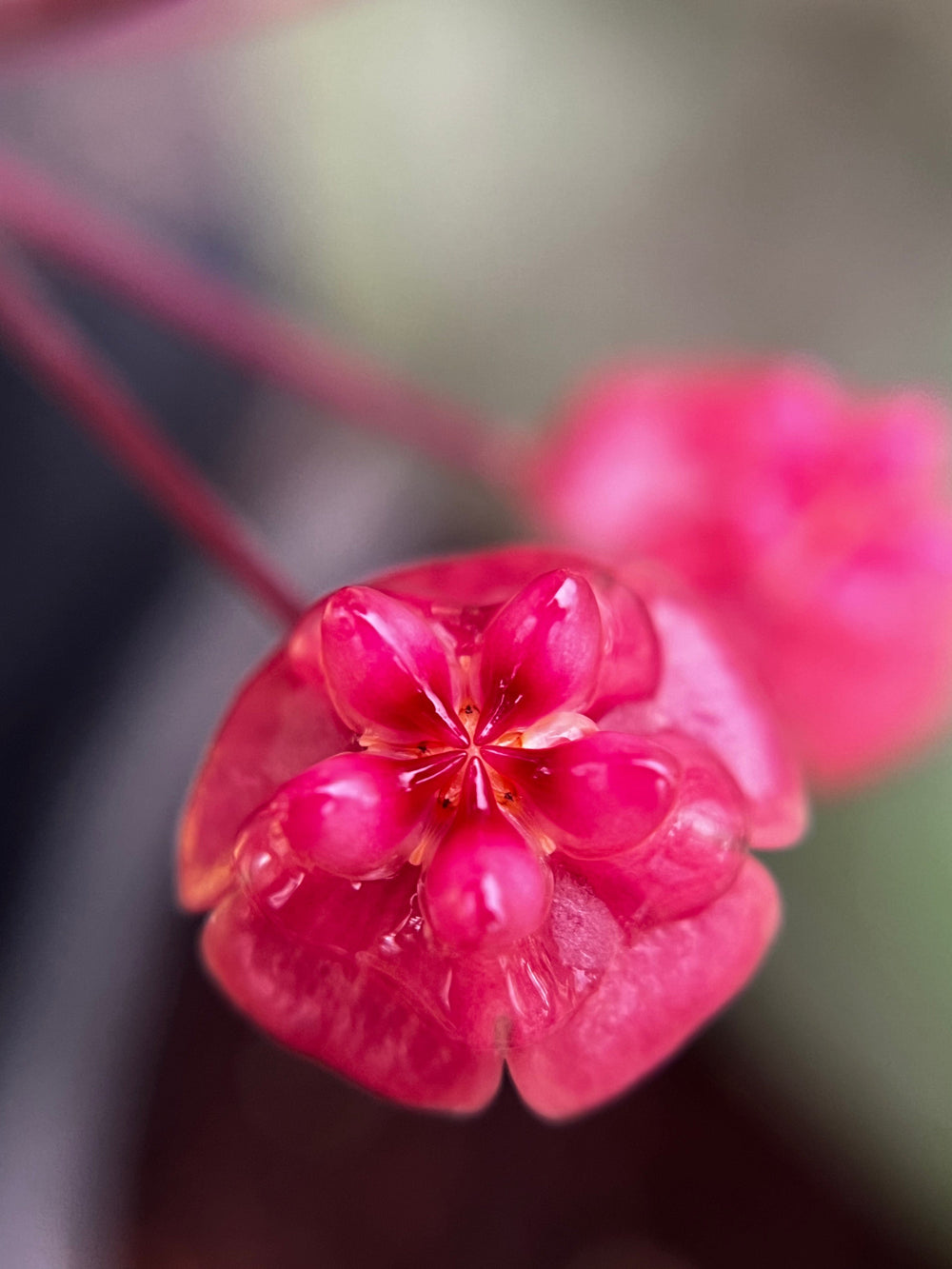Hoya Curtisii - Plant Care Guide

Table of Contents
- Light Requirements
- Watering
- Soil
- Temperature and Humidity
- Fertilizing
- How to Propagate Hoya Curtisii
- Common Pests and Diseases
- Hoya Curtisii - Toxic to Cats?
- The Bottom Line
Hoya curtisii, also known as Porcelain flower, is a plant featuring small leaves adorned with speckles of silver and blooms of small star-shaped light pink flowers. If you’re a plant to add to your hanging basket that is both simple and stunning, and easy to take care of, then Hoya curtisii should definitely appear on your radar.
If you take care of it properly, it will definitely become a great conversation topic, as everyone will be amazed at how well it complements any space it is placed in. How to do that? That’s the main topic of our Hoya curtisii care guide you can find below.
Let's start with a short summary, before we dive into details:
| Key Point | Detail |
|---|---|
| Native Habitat | Southeast Asia (wet tropical biome of Thailand, Malaysia, and the Philippines) |
| Sunlight | Thrives in ample sunlight, but avoid harsh midday sun. |
| Watering | Water once a week in summer, once every fortnight in winter. Let the soil dry out between waterings. |
| Soil | Well-draining to prevent root rot. |
| Humidity | Prefers high humidity levels (40-60%). |
| Temperature | Ideal temperature above 70°F. |
| Fertilization | Fertilize once a month during the growing season with a balanced liquid fertilizer. |
| Propagation | Propagate by stem cuttings, with at least two nodes, in water or potting mix. |
Light Requirements
Hoya curtisii is native to Southeast Asia, more specifically the wet tropical biome of Thailand, Malaysia and the Philippines, which is why it thrives best in ample sunlight, resembling the light conditions it is subject to when growing naturally. While it is a pretty forgiving plant, you should avoid exposing it to the harsh midday sun at all times, as it can, and most likely will, damage your plant.
Watering
Hoyas are known for their ability to store the water they are given in their leaves, which significantly impacts how often they need to be watered. Depending on the season you are in, watering your Hoya curtisii once a week during the summer months and once every fortnight during colder winter months should work fine.
Keep in mind that with this type of plant, it’s better to let them be without water than to overwater them - hoyas are drought-resistant, so it won’t impact them as much as root rot, which can happen if there’s too much moisture in their soil.
If you want to make sure it’s time to water them again, check the soil - if the top inch or two are dry, go ahead. If they’re not, wait a bit more.
Soil
Hoya curtisii, just like many other types of Hoya plants, will thrive when planted in well-draining soil - it will prevent root rot and ensure that your plant will grow exponentially. Avoid anything heavy like clay, as it can lead to water logging.
Temperature and Humidity
Hoyas are plants that grow in a tropical environment, so it should come as no surprise that they thrive when they’re exposed to similar conditions in your care. When it comes to humidity, Hoya curtisii loves high humidity levels - anywhere between 40% and 60% will be an ideal condition for its exceptional growth. While it can tolerate lower humidity, try to increase it if you can - a humidifier works great for this purpose.
As for temperatures, Hoya curtisii likes to be surrounded by warmth - an ideal temperature for it is anything above 70°F.
Fertilizing
Hoyas generally do not need to be heavily fertilized and Hoya curtisii is no exception - during its growing season, fertilizing it once per month with a balanced, liquid fertilizer should be more than enough, meanwhile during fall and winter months, when their growth is stunned, they do not need to be fertilized at all.

How to Propagate Hoya Curtisii
- Find the right stem: Your ideal stem should have at least two nodes and be healthy - cut it underneath the lowest nod and at an angle. Aim for cuttings to be 4 to 6 inches (10 to 15 cm) long.
- Remove the leaves: Strip your cutting of its leaves, leaving only two at the top.
- Plant your hoya cutting: You have two options here - you can either place it in water, or you can pot it in a potting mix right away. If you choose option 1, remember to change water weekly. If you choose option 2, keep in mind that the potting mix should be well-draining and definitely not heavy.
- Watch your Hoya curtisii grow: The roots should form after a few weeks. If you were growing your cutting in water, this is the time to move your growing hoya plant into the soil - try to disturb the roots as minimally as you can while you do it.
Common Pests and Diseases
Hoyas are generally very resistant plants, and Hoya curtisii is no exception to this rule - still, there are some things that affect even the strongest soldiers, and in this case, it’s insects. Mealybugs and scale insects, in particular, enjoy infesting this plant - a lot of times, however, the infestation does not start on the hoya itself, but on another houseplant.
If you notice a bug infestation on any of your plants, it’s important that you isolate it from others - otherwise, you’re risking your whole collection getting affected by it. Using rubbing alcohol on infected plants also won’t hurt.
Another very common issue hoya plants deal with is overwatering, and as a result - root rot. Since hoyas are semi-succulents, meaning they retain some of their consumed water in their leaves, it can be very easy to feed them too much of it. That’s why we recommend waiting until the top inch or two of soil are dry before another watering - it’s always better for your Hoya curtisii to go longer without water than suffer the consequences of too much of it.
Hoya Curtisii - Toxic to Cats?
Hoya curtisii is completely safe to have in a household with a cat - just make sure to put it somewhere your furry friend can’t reach so that they don’t accidentally make it fall and hurt themselves in the process.
The Bottom Line
Although it might not seem so at first glance, Hoya curtisii is actually a low-maintenance plant, easy to take care of even for those who might not have a green thumb. Provide it with the right growing conditions, including meeting the Hoya curtisii light requirements and proper watering schedule, and it will reward you with a sea of beautiful pink flowers, warming up any space you place it in.











